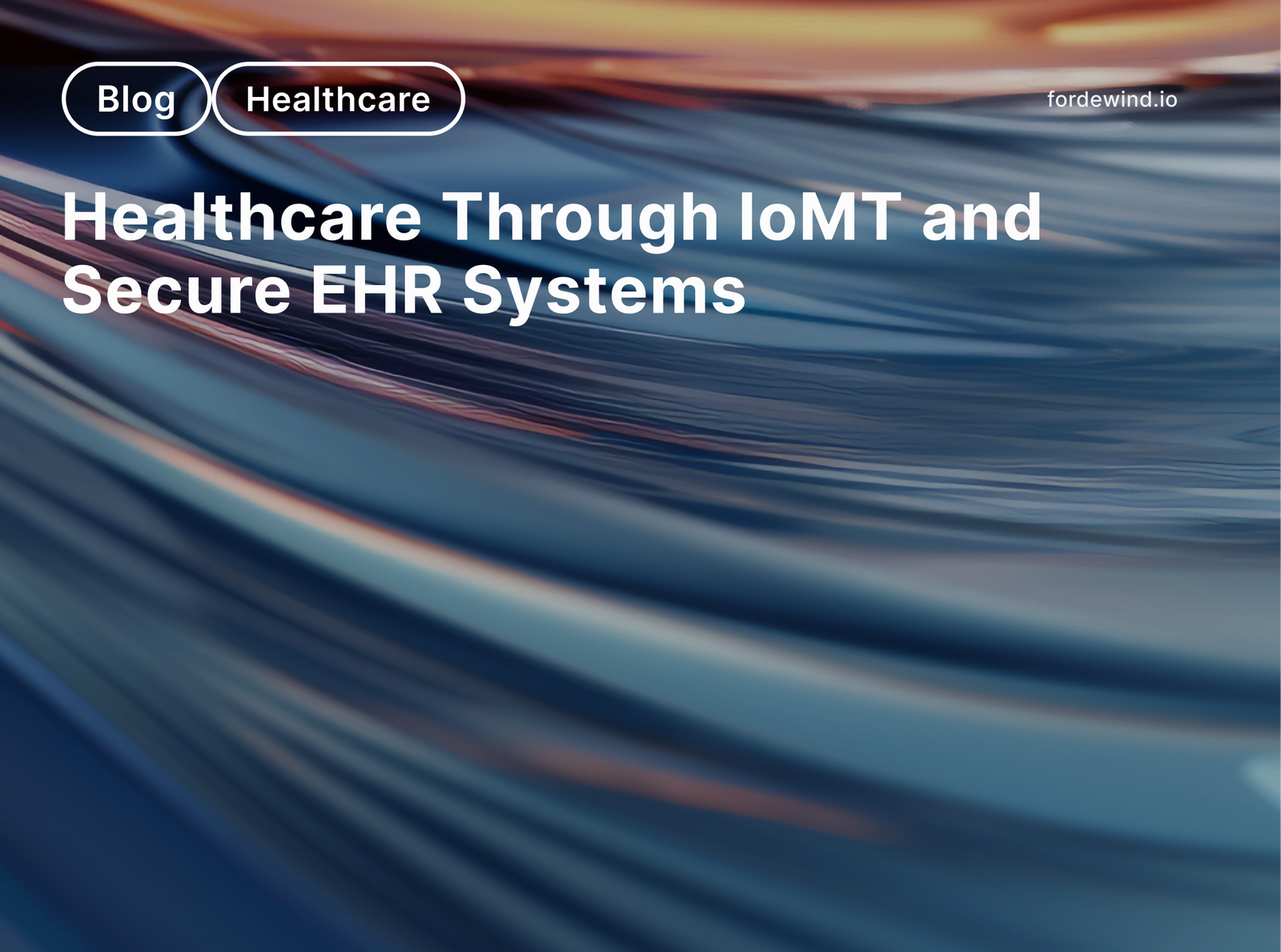✆ + 1-646-235-9076 ⏱ Mon - Fri: 24h/day
Healthcare Through IoMT and Secure EHR Systems


Internet of Medical Things and secure EHR systems are transforming the healthcare industry by delivering smarter, safer, and more personalized care. The Internet of Medical Things (IoMT) connects devices and data in real time, while robust Electronic Health Record (EHR) platforms ensure that critical health data is centralized, secure, and actionable.
Together, these technologies are driving innovation in diagnostics, chronic disease management, and virtual care—while also presenting urgent challenges related to cybersecurity, data privacy, and regulatory compliance.
1. Explosive Growth of Internet of Medical Things and Secure EHR Systems
MarketsandMarkets projects the IoT in healthcare market to reach $94.2 billion by 2026, with a CAGR of 18%. This growth stems from the rising adoption of connected medical devices and the industry’s shift toward value-based care.
Meanwhile, Emergen Research reported the global IoMT market at $130.9 billion in 2021, with rapid growth continuing. Affordable sensor tech, wearables, and the rise of telehealth contribute to this boom.
2. Remote Patient Monitoring and Wearables on the Rise
Internet of Medical Things and secure EHR systems enable Remote Patient Monitoring (RPM), which allows clinicians to track vital signs such as heart rate, glucose levels, and oxygen saturation in real time.
- Wearables: Devices like smartwatches and biosensors have evolved into clinical-grade tools. IDC forecasts that 540 million wearable units will be shipped globally by 2025, many designed for medical use.
- Personalized Treatment: With data integrated directly into secure EHR systems, physicians can deliver personalized, data-driven care plans with greater accuracy.
3. AI, IoMT, and Preventive Care Powered by Secure EHRs
Artificial Intelligence (AI) plays a key role in analyzing the massive datasets generated by IoMT and secure EHR systems.
- A study in Nature Medicine demonstrated that AI models can predict early signs of sepsis by analyzing real-time vitals—reducing mortality in ICU patients.
- Predictive analytics help identify chronic disease risk and optimize treatment—shifting care from reactive to preventive.
4. Cybersecurity Challenges in a Hyperconnected Healthcare System
As more devices and systems connect, the attack surface widens. Internet of Medical Things and secure EHR systems must be protected with a “cybersecurity by design” approach.
- The FDA now requires that connected devices address cybersecurity from the design phase, including post-market risk mitigation and patching.
- The EU MDR imposes strict rules for software and hardware integrity, further enforcing data security for IoMT.
5. Regulations Supporting IoMT and EHR Security
Global and national frameworks are catching up to the speed of innovation.
- In the U.S., TEFCA provides a universal framework for secure health data exchange—enhancing trust while enabling interoperability.
- In the EU, the GDPR mandates strict consent and data handling rules for patient data, applying to all IoMT deployments and EHR systems processing EU residents’ information.
These regulatory forces guide the development and use of IoMT and secure EHR systems globally.
6. Integrating Internet of Medical Things Devices into Secure EHR Systems
Seamless integration of IoMT and secure EHR systems allows providers to create a unified view of the patient’s health—vital for telemedicine and precision care.
- Real-Time Syncing: Devices send structured data directly to the patient’s EHR, enabling clinicians to act fast without in-person visits.
- Security Protocols: Encryption, access control, and audit trails ensure that the integration doesn’t compromise data privacy.
💡 Learn how Fordewind builds HIPAA-compliant EHR systems tailored to IoMT integrations.
7. Barriers and Solutions for Connected Care
Adopting Internet of Medical Things and secure EHR systems comes with unique challenges:
- Interoperability: Lack of unified standards hampers device-to-system communication.
- Scalability: More data means a greater load on cloud infrastructure.
- AI Ethics: Transparency and fairness must be guaranteed in decision-making models.
- Ongoing Compliance: Healthcare providers must evolve with changing rules and certifications.
Addressing these issues requires coordinated efforts across developers, regulators, clinicians, and cybersecurity professionals.
Conclusion: The Connected Future of Healthcare
Internet of Medical Things and secure EHR systems are revolutionizing healthcare by enabling real-time monitoring, predictive analytics, and patient-centric care. But innovation must go hand-in-hand with security, compliance, and ethical considerations.
The future of digital health will be shaped by platforms that can balance clinical intelligence with airtight cybersecurity. For providers, patients, and policymakers, the message is clear: a connected, secure healthcare system is no longer optional — it’s essential..